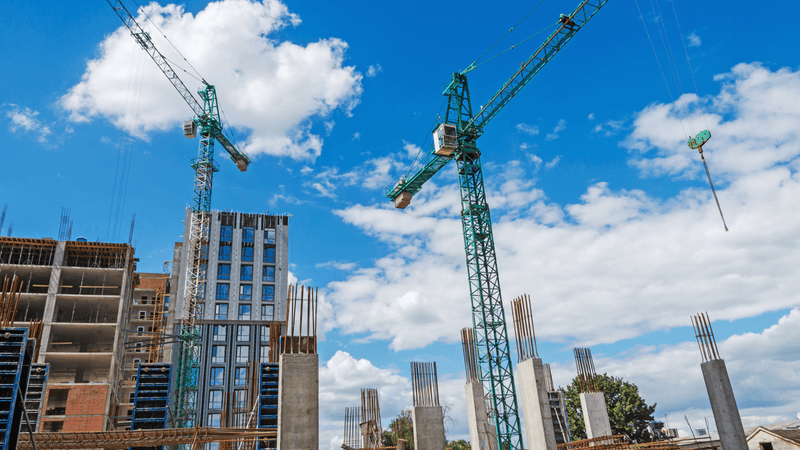The new ‘gateway’ approval process — introduced by The Building (Higher Risk Building Procedures) (England) Regulations 2023 (HRB Regs) aims to ensure the safety of certain higher-risk residential buildings (HRBs) in England.
Its purpose is to pause projects at various points between inception and completion to allow for them to be reviewed and inspected from a building safety perspective.
These new requirements came into effect on 1 October 2023 and apply to any employers, developers or building owners that plan to build a new HRB, create an HRB through change of use (or alteration/extension) or plan to undertake building work to an existing HRB.
Failure to follow this new building control regime may constitute a criminal offence.
Here, Chloe Harrison and Zoe Pond outline all you need to know about the gateway process and its impact on project timescales.
New regulatory regime
In June 2022, the Government enacted the Building Safety Act 2022 (the Act), which paved the way for the Health and Safety Executive (HSE) to establish a new building safety regulator (BSR).
While the BSR has been established as the Building Control Authority for HRBs, it will provide oversight of the entire built environment — raising standards for building safety across the industry and delivering the new regulatory regime for HRBs.
What is a higher-risk building?
Broadly speaking, HRBs are defined under s.65 and s.120D of the Building Safety Act 2022 as buildings in England that are at least 18m (or seven storeys) high and contain at least two residential units. However, the exact definition and exclusions depend on the building's phase.
During the design and build phase, exclusions include secure residential institutions, hotels and military premises (Reg 7, Higher-Risk Buildings (Descriptions and Supplementary Provisions) Regulations 2023), while care homes and hospitals which meet the height/storey criteria and which contain at least two residential units are caught by the definition of HRBs.
During the occupation phase, exclusions include secure residential institutions, care homes, hospitals, hotels and military premises (Reg 8, Higher-Risk Buildings (Descriptions and Supplementary Provisions) Regulations 2023), regardless of the number of residential units.
For height measurement details and specific criteria/exclusions per phase, refer to the Regulations and the Guidance.
What is a ‘gateway’?
The new regime places residents’ safety at its heart, with the new gateway process providing certain hold points over the course of HRB development to ensure that safety is considered at each stage of the building control process.
The BSR requires assurances to be given before:
- building work can commence
- a building can be certified as ‘complete’
- a building can be occupied.
These gateways allow the BSR to review building safety and building regulations compliance throughout projects relating to an HRB.
Three types of gateways
Gateway one (planning)
On 1 August 2021, the HSE became a statutory consultee for planning applications for HRBs at “Planning Gateway One” (The Town and Country Planning (Development Management Procedure and Section 62A Applications) (England) (Amendment) Order 2021 (TCP Order)).
At this stage, the local planning authority must seek advice from the BSR for any application received which relates to an HRB. Before planning permission is granted, the BSR must check that the design of the building addresses fire safety. The early consideration of fire safety is key to improving HRB design — intervention at this stage avoids fire safety concerns needing to be rectified once the development is under construction or built.
When submitting an application for planning, the applicant is asked to provide a fire statement (Part 2, paragraph 4 of TCP Order) containing the specific considerations made regarding fire safety in the development. The BSR can then review and raise any concerns with the local planning authority. The BSR will assess each application and provide advice to the local planning authority accordingly.
Gateway two (pre-construction)
The second gateway is the building control approval application stage. Construction can’t begin until the BSR is satisfied that the design meets the functional requirements of the building regulations (Reg 3 of HRB Regs).
Plans for the build must outline exactly how compliance with the functional requirements of the building regulations is going to be met — and that unrealistic management expectations are not being overly relied upon.
The BSR assembles a multidisciplinary team (MDT) of experts for each application. As part of building control, the MDT is involved throughout the construction process. It sets an inspection schedule and provides a lead contact for applicants.
The applicant will need to submit:
- information about the building, client, principal contractor and principal designer (Reg 4(1) (a) and (b) of HRB Regs).
- a statement that the application is made under the HRB Regs (Reg 4(1) (c) of HRB Regs).
- where HRB work consists of work to an existing building, a description of the existing building including details of its current use, height and number of storeys (Reg 4(1) (d) of HRB Regs).
- a description of the proposed HRB work to be carried out (Reg 4(1) (e) of HRB Regs).
This must be accompanied by (Reg 4(2) of HRB Regs):
- a detailed plan of the HRB and works
- plans (as necessary) to show that the HRB work would comply with all applicable requirements of the building regulations
- a competence declaration
- a construction control plan
- a change control plan
- a mandatory occurrence reporting plan
- a Building Regulations compliance statement
- a fire and emergency file
- where the applicant proposes occupation of part of the building before completion of the HRB work, a partial completion strategy.
The BSR decides on an application’s validity within 12 weeks from the date that the application is received by the BSR. This can take longer if agreed with the applicant in writing (Reg 5(1) of HRB Regs).
Gateway three (post-construction)
The third and final stage in the process introduces a hold point at completion, before occupation of the HRB can occur.
Planning for this stage begins at the beginning of the building control process to ensure that a programme is in place to allow for the collection of all necessary information. This links to the client’s obligation to compile (and keep up to date) the ‘Golden Thread’ of building information in an electronic facility (Reg 31 of HRB Regs).
The completion certificate application must be made in writing to the BSR and include the information and documentation set out under regulation 40 of the HRB Regs. The completion certificate application must be accompanied by a ‘compliance declaration’. Signed by each principal contractor and principal designer, this confirms that they fulfilled their duties under Part 2A of the Building Regulations 2010.
Before determining a completion certificate application, the BSR must arrange an inspection of the completed HRB work for the purpose of assessing whether the work complies with all applicable requirements of the building regulations (Reg 43 of HRB Regs).
The BSR must have the required information and have carried out its inspection(s) to issue a completion certificate. The BSR decides on an application’s validity within eight weeks, starting with the date at which the application is received by the regulator. This can take longer if agreed with the applicant in writing (Reg 41(1)(b) of HRB Regs).
An HRB may only be occupied once a completion certificate for the relevant part of the building is issued (s.76 of the Building Safety Act 2022). If the relevant accountable person fails (without reasonable excuse) to obtain a completion certificate for an HRB before the building is occupied or the principal accountable person fails to register the HRB with the BSR before occupation, they could face severe criminal penalties, including up to two years in prison (s.76 & s.77 of the Building Safety Act 2022).
Impact on project timescales
Given the various new approvals that must be sought at the relevant stages of the construction programme, the new HRB Regs are likely to impact on project timescales.
In addition to the 12- and eight-week turnaround times for the BSR to approve gateway two and three applications (respectively), duty holders must factor in the need to register a HRB before it can be occupied.
While existing HRBs should have been registered by 30 September 2023, new HRBs will need to be registered for the first time.
It’s therefore essential to start including timescales for BSR approvals in construction programmes and when drafting building contracts to allocate risk accordingly for any potential delays suffered due to the new BSR approval process.
Talk to us
If you need support, our dedicated building safety team offers a truly multidisciplinary service and one-stop-shop for your legal needs.
Talk to us by completing our contact form below.





